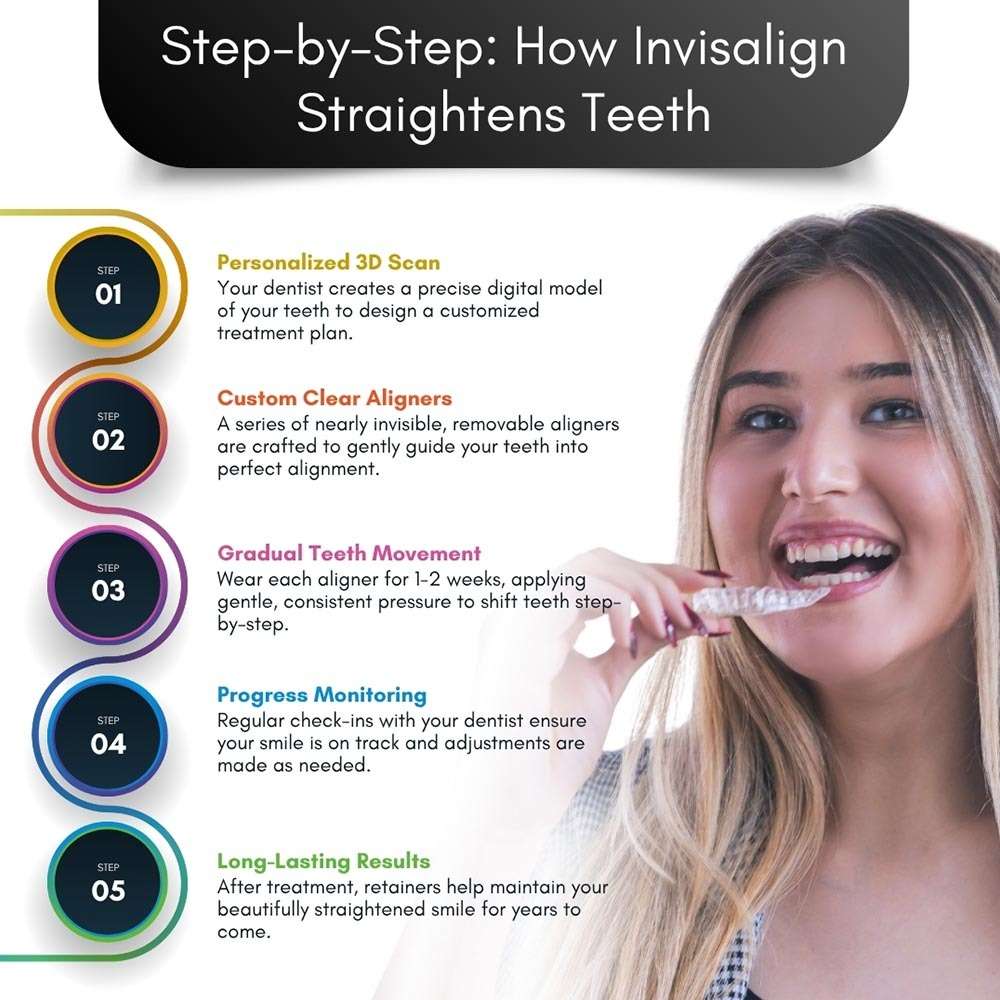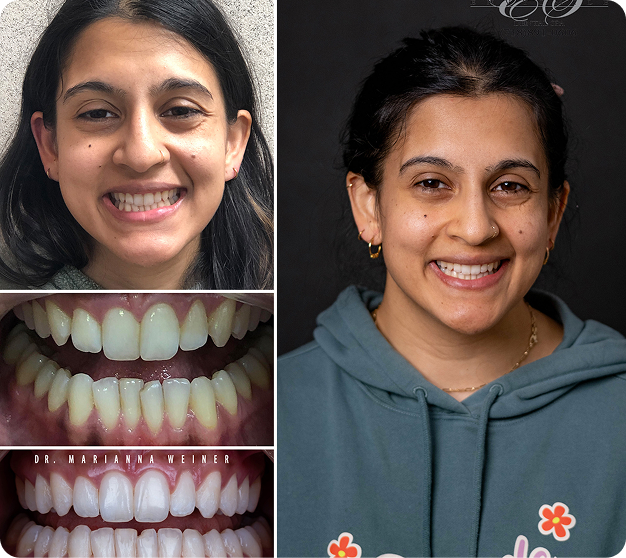What Is Invisalign?
Invisalign, offered at Brooklyn Invisalign Center, is an aligner system designed to correct common problems like overlapping teeth and numerous other issues affecting how your teeth bite together. It works similarly to braces, but the aligners are fully removable, and there is no need for brackets and wires.
The system is not new but is the result of decades of research and development that is still ongoing. Invisalign technology is continually being refined and improved to correct an increasing number of issues, including those that are more complex and were originally only suitable for fixed braces.

- Invisalign for Overbite
- Invisalign for Crossbite
- Invisalign for Crowded Teeth
- Invisalign for Underbite
- Invisalign for Gap Teeth
- Invisalign for Open Bite
How Does Invisalign Straighten Teeth Without Braces?
If you use Invisalign to straighten your teeth, you will wear a set of aligners for two weeks before discarding that set and moving on to the next set. The number of sets needed depends on your custom treatment plan.
For example, if you have front teeth that slightly overlap, Invisalign can help correct them using relatively few sets of aligners. You may complete your treatment in weeks or just a few months. More serious problems affecting your bite take longer as the tooth movements needed are more complex.

What Are the Aligners Like?
The aligners are made from smooth, BPA-free plastic and are completely clear. They are custom-created to fit around your teeth tightly yet comfortably. Each aligner places a specific amount of pressure on certain teeth, forcing them to move into the proper positions.
Sometimes, small attachments are used to increase this pressure, giving the aligners “handles” to grip onto, increasing the effectiveness of treatment. These attachments are small buttons of composite resin, a tooth-colored material that is discreet and virtually invisible in the mouth. The buttons are attached to your teeth on or during treatment.
How Does Invisalign Treatment Differ From Ordinary Braces?
Unlike fixed braces, you don’t need to adjust your diet or oral hygiene routine since the aligners are removable.
Because you can take out the aligners, you can eat anything you wish since you remove them for mealtimes and when drinking anything other than water. It is important to remove them for meals as otherwise, foods and beverages could stain your aligners, so they look unsightly. Also, food can become trapped between your aligners and teeth, which could increase your risk of cavities and gum disease.
Aligner treatment tends to be more convenient than fixed braces, and you will only need to see our Brooklyn Invisalign provider every 6 to 8 weeks for a quick checkup. There are no components like brackets or wires that must be adjusted.
Comparison of Invisalign and Other Orthodontic Appliances
- Invisalign vs Breezy Braces
- Invisalign vs SureSmile
- Invisalign vs Clear Braces
- Invisalign vs Traditional Braces
What Our Patients Are Saying
Using a Retainer After Teeth Straightening
A retainer is an important component of all orthodontic treatment. You must wear a retainer once you finish straightening your teeth with Invisalign.
During orthodontic treatment, it is not only your teeth that move, as tooth roots also gradually move through your jawbone. The retainer “retains” your teeth in their new positions as your jawbone gradually remodels around your tooth roots. If your retainer has cracked or you experience unexpected pain, our emergency orthodontics in Brooklyn can help you.
Can I Use a Retainer for Teeth Straightening?
The short answer is no. Retainers are not designed to move teeth and will not apply the continual pressure required to force teeth into the proper positions. Therefore, you cannot use a retainer to straighten your teeth.
However, if you forget to wear your retainers for a few weeks, you may find that your teeth have shifted position. Starting to wear your retainers again could help to move your teeth back into the proper places.
Can I Straighten My Teeth Without Dentist Prescribed Braces or Aligners?
Trying to straighten your teeth using DIY remedies is an extremely bad idea. The consequences could be disastrous for your dental health. Orthodontists and Invisalign providers are specially trained to provide treatment plans that straighten teeth safely. In some cases, dentist may recommend a dental palate expander to help widen the upper jaw and create space for proper alignment.
If you try to straighten your teeth at home, you risk putting too much strain on your tooth roots. The potential side-effects could include:
- Tooth decay.
- Tooth infections.
- Malocclusion.
- Infection.
- Severe pain.
- Tooth loss.
The only other way to straighten teeth without braces is with oral surgery. We recommend oral surgery only if your teeth and jaws are significantly misaligned and cause difficulty in daily life.
Related Articles
If you are concerned about your crooked teeth and would love a straighter smile, or have any questions, contact Brooklyn Invisalign Center to schedule an appointment with our dentist to find out how to straighten teeth safely and effectively. In many cases, the solution will be Invisalign aligners. Otherwise, we can recommend alternative treatments, such as fixed braces.

